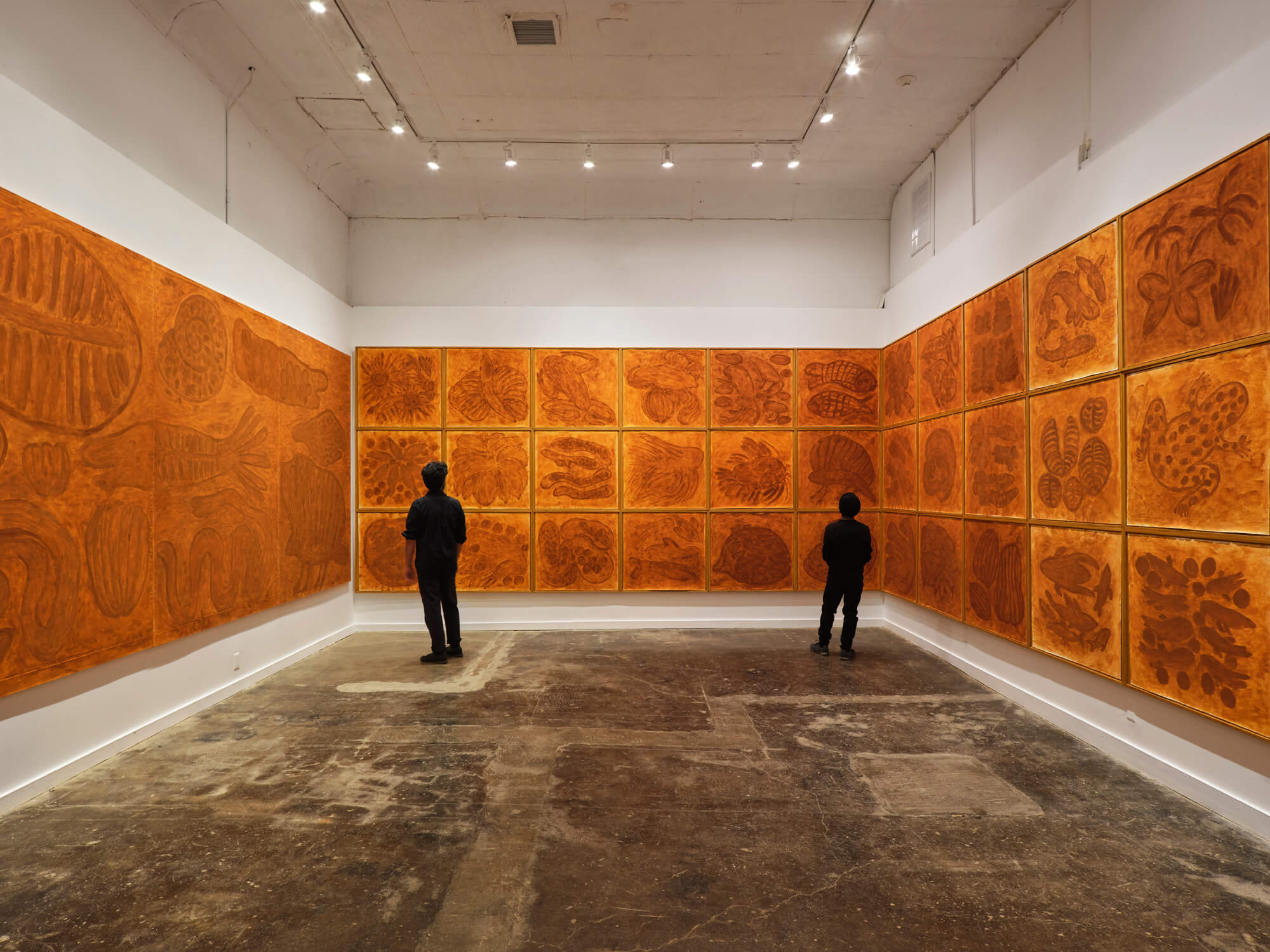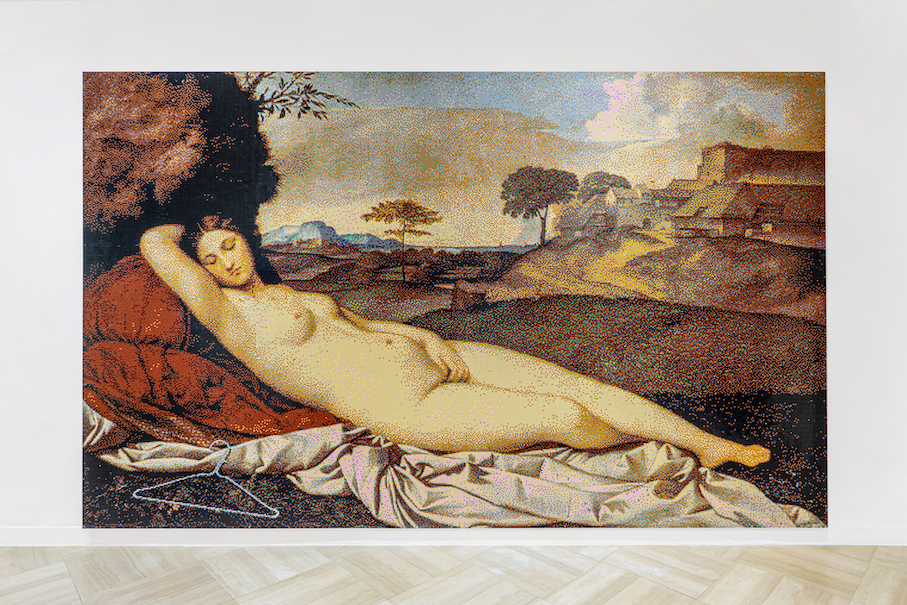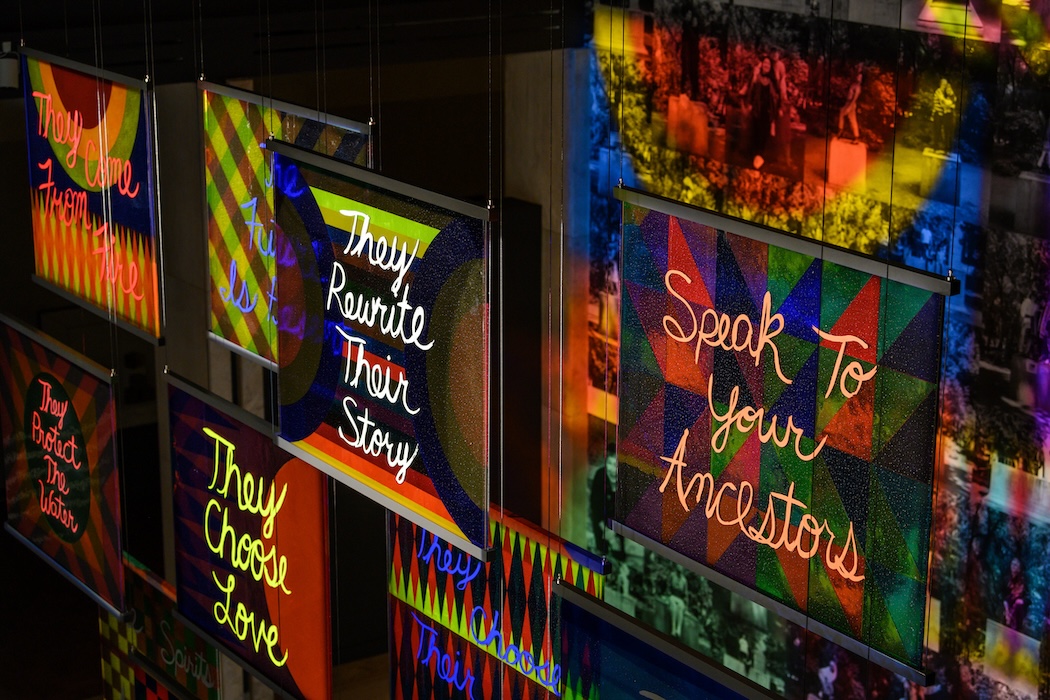On a lush green lawn in the Giardino delle Vergini in Venice, a series of light-colored stones lay carved in a variety of designs—swirls, coils, and vine-like lines. They read like sacred messages from another time, past or future. To see them, when they were presented during the 59th Venice Biennale, “Milk of Dreams,” viewers needed to traverse the lawn, meander through the rock groupings, look down, shade their eyes from the summer sun.
These “Insculptures,” as Solange Pessoa calls them, are an ongoing series, their name taken from the ancient Latin word insculptu. The Brazilian artist lives and works between a studio in Belo Horizonte and a farm in the countryside of Minas Gerais. Working with drawing, sculpture, installation, and film, she uses materials that feel deeply of this earth. Perhaps it’s because, as she suggests, she lives in a mining town in which she can see literally mountains move, the devastation of industry on the immediate environment, the cavities left behind from mineral extraction.
Pessoa’s ability to see material for far more than meets the eye unlocks something within us as viewers we didn’t see there, too. At Ballroom Marfa last year, she reinstalled a work from 1994, Longilonge, comprised of coffee bags overflowing with fruit, seeds, poems, paper, and more. She knew then it was a work without beginning and end, and even after its installation in Marfa it will find a new life in Austria this November. Whitewall spoke with Pessoa at the start of the new year about tapping into a geological unconscious to create something that is faithful to humanity’s relationship with stone, earth, and the cosmos. This week, her solo show “Earthworks” opens at Mendes Wood DM in New York, on view through June 17, 2023.
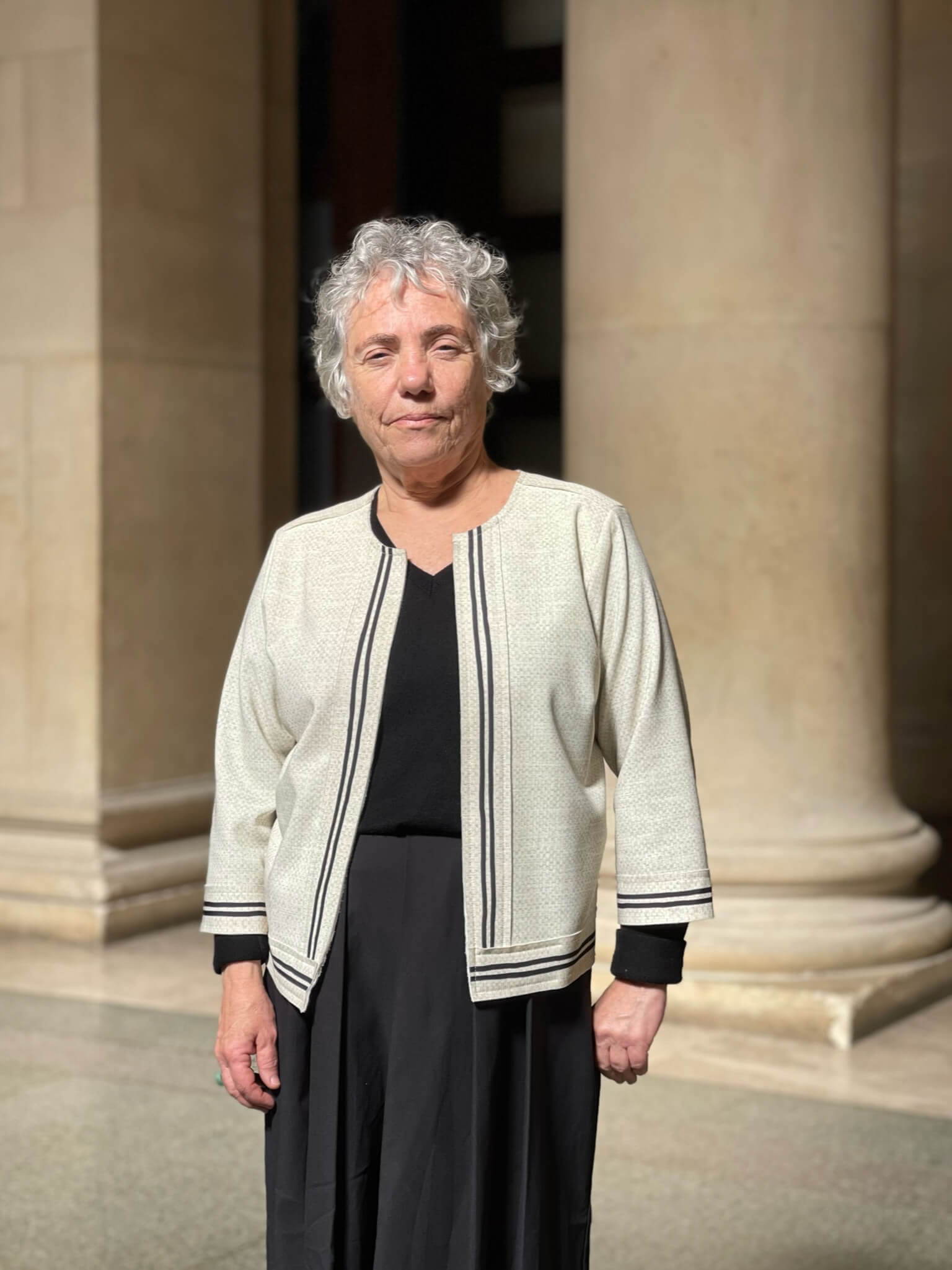
Solange Pessoa, photo by Daniel Pinho.
WHITEWALL: You live and work between your studio in Belo Horizonte and your farm in the countryside of Minas Gerais. Could you describe both settings for us?
SOLANGE PESSOA: I tend to work in various places because I manage my production across various sites including the studio, the soapstone factory, different film sets, et cetera. In Belo Horizonte I am working on the construction of a new atelier, better adapted to what I do, where I will be able to produce and oversee works on a bigger scale, organize my archives and my library properly, and have an edit room for my films.
The farm is a place that allows me to think about and develop certain projects such as maquettes for my sculptures, other more conceptual projects (that is, thinking ahead to the future), such as planting flower trees and other botanical ideas, as well as being directly in touch with nature, with plants, with the mountains, with the river, and with animals.
WW: What is a typical day like for you there?
SP: I like waking up early and working during the morning, especially if I am drawing. I find the mind is at ease then and closer to [our] dreams. I keep my atelier organized, I tend the garden, I sketch, read, and check on what has been produced during the week and keep in touch with the people involved in my upcoming projects.
WW: Your work was recently on view in the 59th Venice Biennale, where you showed 14 new paintings and 55 soapstone sculptures. What was the starting point for this project?
SP: The installation Nihil Novi Sub Sole was put together from a maquette that was already very developed, and I only had to complete certain groups to reach its totality. I had these thoughts in my mind for a very long time and conceiving them was very liberating. The drawings were also part of a process already in progress, of fluxes and movements.
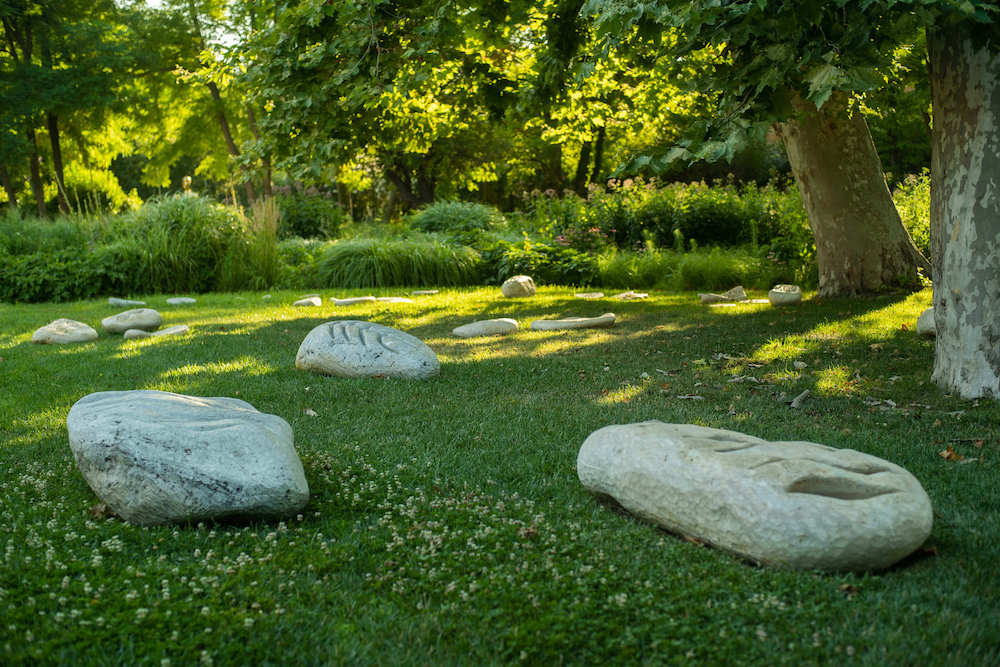
Installation view of Solange Pessoa at the 59th International Biennale di Venezia “The Milk of Dreams” in Venice, Italy (2022), photo by João Vargas Penna, courtesy of the artist and Mendes Wood DM, São Paulo, Brussels, and New York.
WW: How were the black-and-white drawings of “Sonhíferas” created? Do they start with a sketch?
SP: Yes, they do—from notes and studies, from tracks of thoughts that gradually take shape in the mind and in the wishes to materialize them.
WW: How did you envision Nihil Novi Sub Sole interacting with its outside location? With visitors?
SP: I analyzed the area that was given to me, the Giardino delle Vergini, in-depth, through spatial research, through the local morphology, by looking into the local vegetation, the surrounding environment and its history, archaeology, and considering the time and space. It’s a rather marginal place within the officiality of the Biennale, and that rather pleased me. It’s alive and instigating. It has a temporal dimension that is ludic, contemplative, and unexpected. I felt that the visitors would feel at ease there to enjoy, to participate, and to reflect.
WW: What draws you to working in the material of soapstone?
SP: Both its mystery and its familiarity. Soapstone is abundant in Minas Gerais, a material that belongs to the colonial architectural and sculptural traditions. It’s a poor stone if compared to other more noble stones, such as marble.
WW: You call these sculptures “Insculptures,” likening them to an inscription. Can you tell us more about that inscription?
SP: The “Insculptures” are engravings, grooved drawings, carved into the stone as a support. They are elemental, cosmogonic, philosophical drawings. It’s a very ancient word that stems from the Latin, insculptu. Some of the groups within the installation Nihil Novi Sub Sole are like that, too—more graphical and intimate.
WW: You’ve described them as reminiscent of a faraway landscape, an updating of antiquity that is both pre- and post-history. How do you tap into this geological unconscious?
SP: Maybe because I live in a mining region, and because I can see and experience the absurd cavities that are left in nature, the aggressive breakdown of the landscape, the vanishing of peaks and mountains, the redeployment of earth and minerals, as well as the recent large-scale ecological disasters, the tectonic plates of the unconscious that are always in constant subterranean movement bring to light the farthest layers, and the deepest times.
WW: When your work is placed in nature, how do you want it to interact with its surroundings, for instance, collecting rainfall?
SP: I believe that the sculptures “continue” in nature, becoming a part of it and giving back its natural substances. They are extracted from metamorphic rocks that are rich in vegetation, fossils, and other minerals. Soapstone belongs to this kind of rock.
WW: And by contrast, when you bring your work into man-made indoor spaces?
SP: Each installation has its own specific nature, material, temporality, and space. The spaces are felt, observed, experimented with, and emptied. Many times, the indoor locations interact with the outdoor locations in a fusion and completeness.
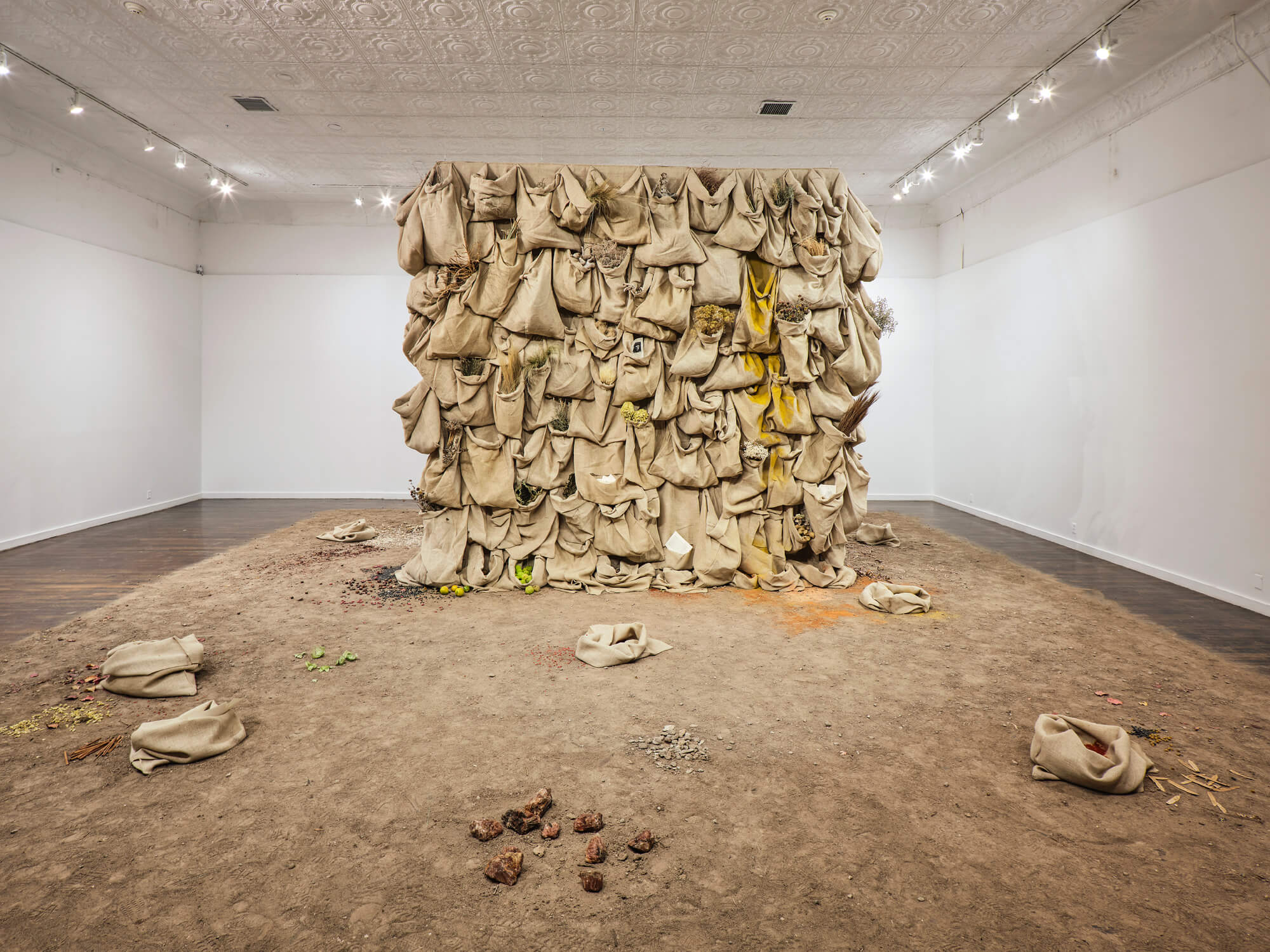
Installation view of “Solange Pessoa: Longilonge” at Ballroom Marfa, Marfa, TX (2019), photo by Alex Marks, courtesy of the artist and Mendes Wood DM São Paulo, Brussels, and New York.
WW: Your recent solo show at Ballroom Marfa, “Longilonge,” re-created an installation of yours from 1994, in which coffee bags are suspended from the ceiling, filled with fruit, flowers, seeds, bones, earth, and poems. Can you tell us about the initial idea behind this piece? What was it like to re-create it in Marfa?
SP: I put this installation together in 1994 in a warehouse that I used to share with other artists for a group exhibition entitled “Chão e Parede” (Floor and Wall). I recognized in that time that this was something unfinished, that the archives were infinite, and that there was much more that I could add to it. After some time that became even more clear to me, and I felt the desire to return to the installation and expand it.
The materials that make up this installation are incredibly familiar to me, I have worked with them before, and they are part of my collective imagination. I had the opportunity to re-create it in Marfa and incorporate local materials, appropriate to that context, which conferred great universality to the archives. From the central nucleus (that is, the early versions) I intend to expand this installation even further, in an exhibition that will be presented at Kunsthaus Bregenz, Austria, in November of this year. I believe that the installation will reach greater plenitude.
WW: That show included new paintings inspired by the location of Marfa. Can you tell us about how research into a place, like Marfa, inspires the work?
SP: It’s a combination of emotions and feelings. I pay a lot of attention to the sensible and symbolic relations that these spaces operate in culture, to the infinite plurality of feelings and indetermination, to the space-place, the territory.
WW: You work with a variety of organic materials, from stone to plants, leaves, clay, feathers, hair, and charcoal. What do these materials evoke for you?
SP: The materials are out there in the real world, in a physical and transcendent relationship with mankind, in all its ludicrous and alive capacity. They reach me through attraction, intuition, and curiosity. It stems from the will to look within things, into what is not seen, an inspecting curiosity that conveys value to the material image of substances.
WW: And what are they meant to evoke in the viewer?
SP: I believe that I activate the viewer’s fond memories, intense sensations, hidden feelings, and telluric experiences with time, amongst other things.
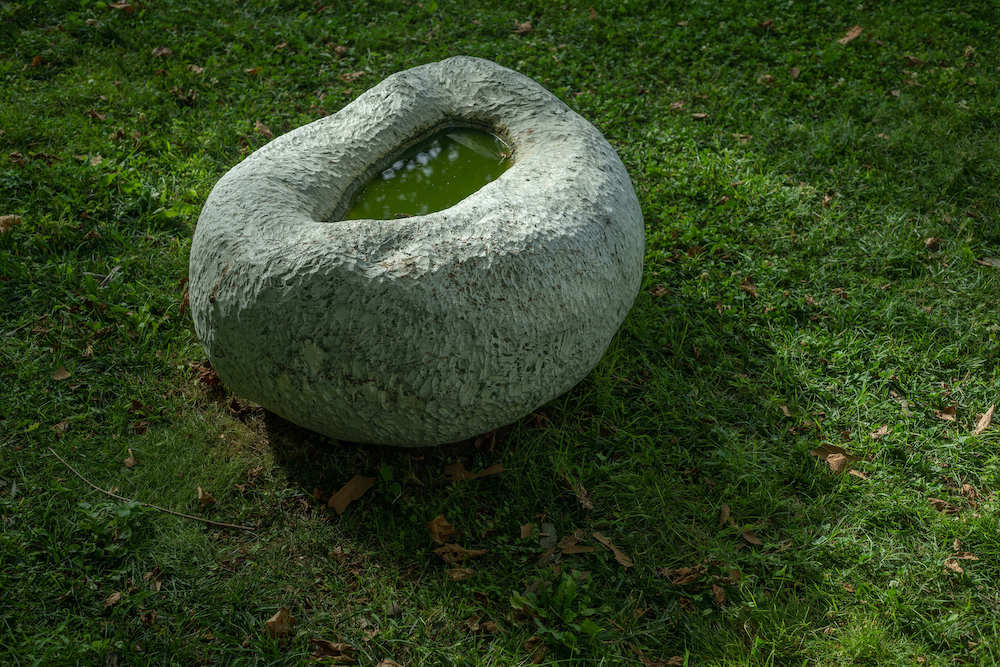
Installation view of Solange Pessoa at the 59th International Biennale di Venezia “The Milk of Dreams” in Venice, Italy (2022), photo by João Vargas Penna, courtesy of the artist and Mendes Wood DM, São Paulo, Brussels, and New York.



